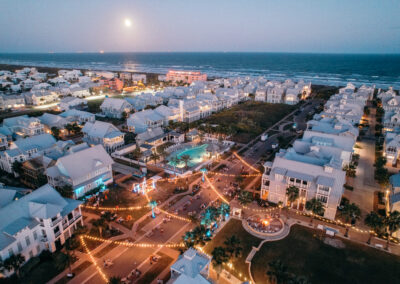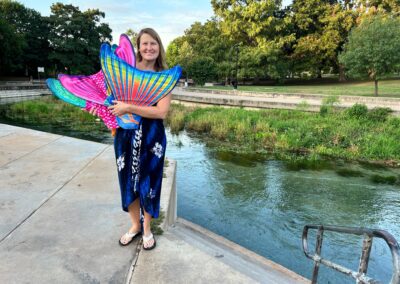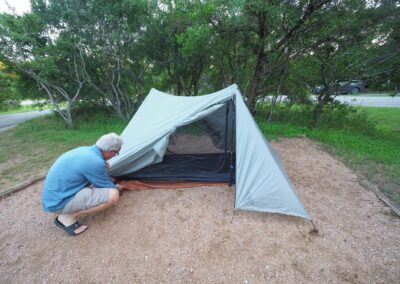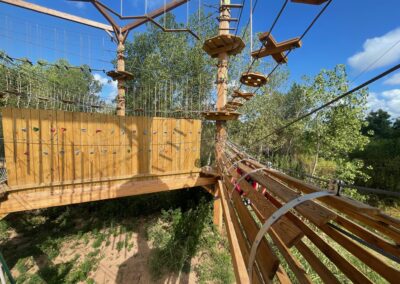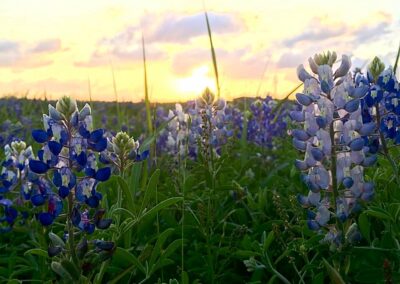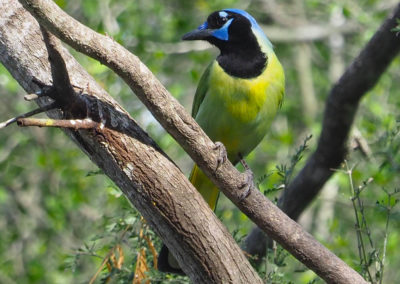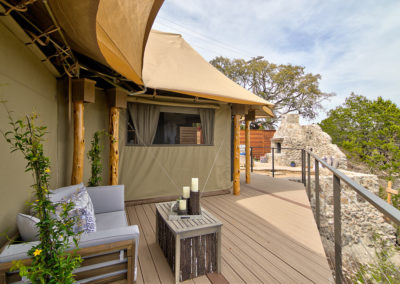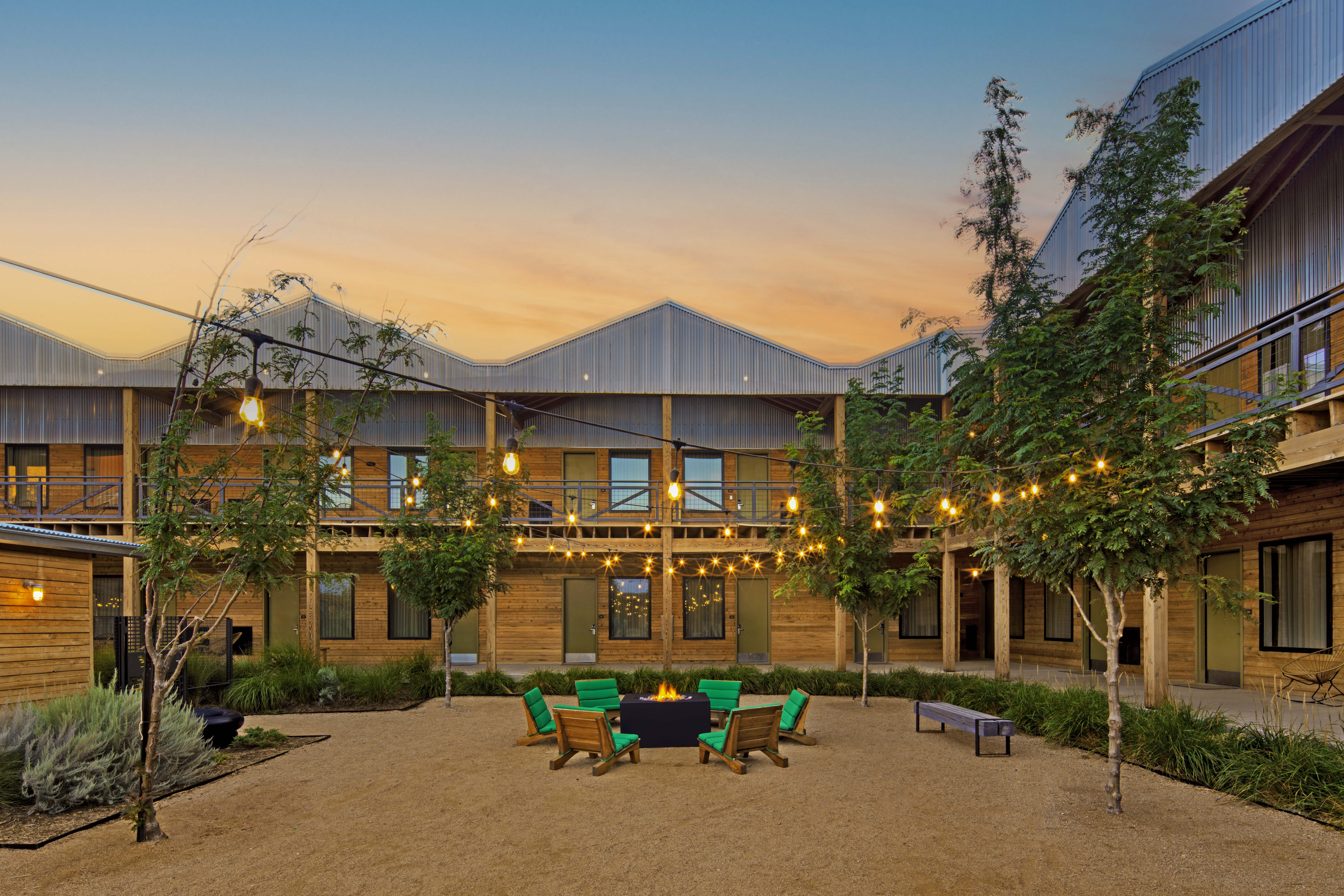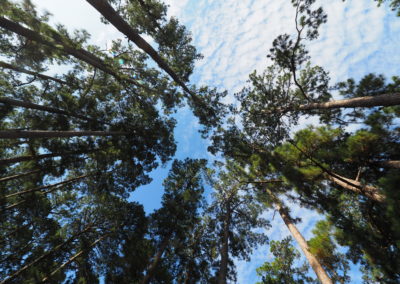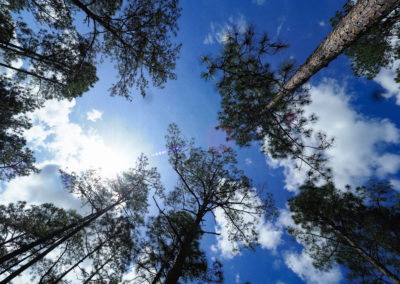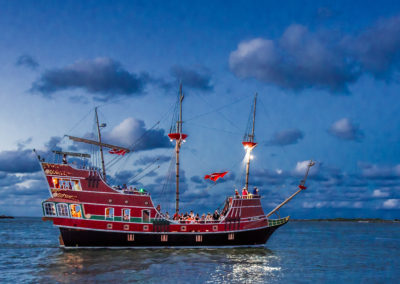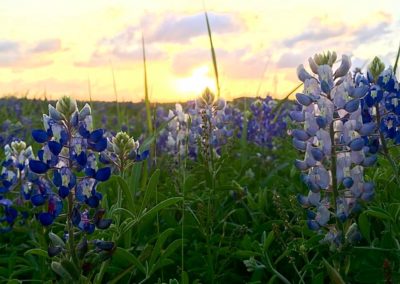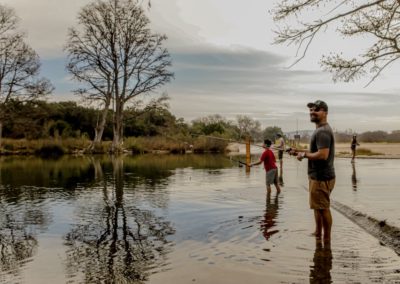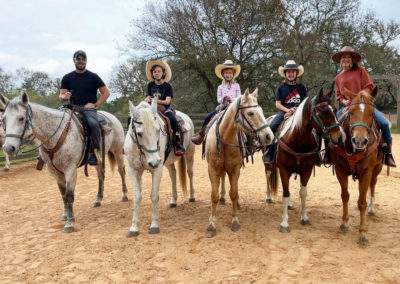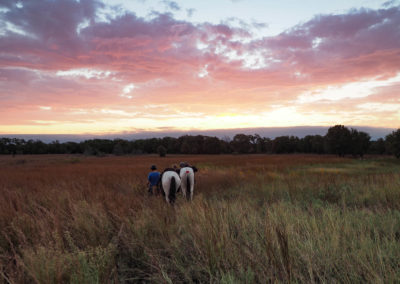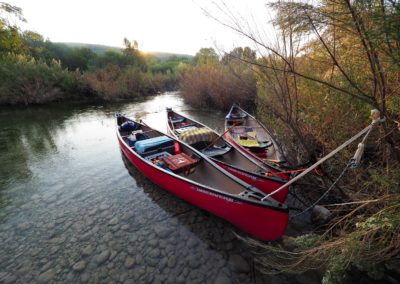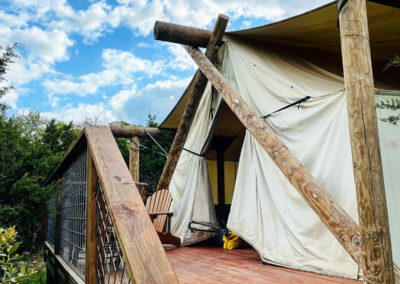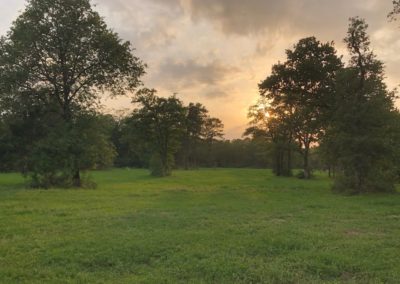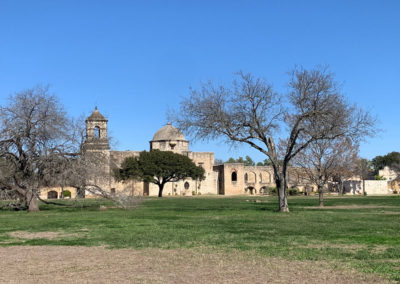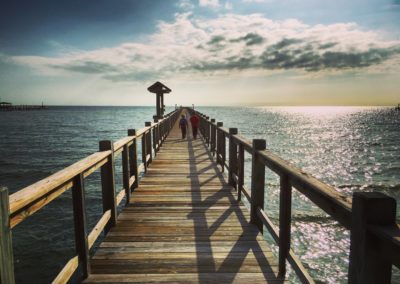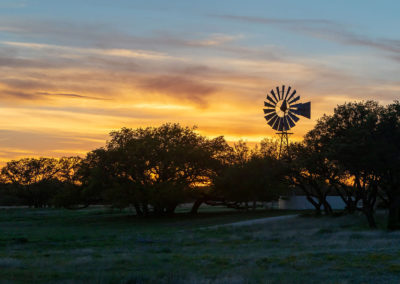
Anglers cast for redfish in Matagorda Bay, near Matagorda, Texas. Pam LeBlanc photo
Clinging to a seat on a low-slung boat roaring through the twisting channels at the edge of Matagorda Bay, I feel like I’m in a video game.
We bank around a big corner in the inky, pre-dawn blackness, neatly avoid a half-submerged log, swoop into a reed maze and pop out, 30 minutes later, in a shallow saltwater lake.
We slow to a putter just as the first orange smudge of sunrise appears on the horizon. Ten minutes later, Peyton Arrison, the owner of Shells2Scales guiding service and the boat’s driver, readies the fishing gear.
I’ve never thought of myself as much of an angler, but when I got an invitation to spend a few days on the Texas coast casting for redfish, kayaking, and enjoying the beach, I didn’t hesitate.
Gone fishing in Matagorda, Texas
So many redfish are swirling around in the shallows where we’re stopped that I can see the tips of their tails breaking the surface of the water.
Arrison casts just off a point of land, then hands the rod to me. He hands another rod to my husband.
I keep an eye on the orange bobber, and in less than five minutes, the first fish hits. I set the hook and start to reel it in, as Arrison coaches me along. (“Keep the tip up! Keep the tip up!”) A few minutes later, he uses a net to scoop a beautiful, 24-inch redfish out of the water.

Anglers show off their catch in Matagorda, Texas. Pam LeBlanc photo
The scene replays itself over and over in the next few hours. Some of the fish we catch are too big to keep ––– the per– person bag limit is three redfish that measure between 20 and 28 inches. We toss the big ones back; the rest go into the cooler.
By 10 a.m., all four of the anglers on our boat ––– even the one who’s using a fly rod to fish ––– have limited.
Our coolers full, we head back to the marina, where Arrison cleans and filets our fish, and then packs it in bags so we can take it home.
It’ll make some fine eating. I love redfish Veracruz style ––– sauteed with tomatoes, onions, and green olives. Redfish can also be fried, baked, grilled, or chopped up and doused with fresh lime to make ceviche.
The Full Stringer Lodge in Matagorda, Texas

The Full Stringer Lodge in Matagorda, Texas rents tidy rooms and runs an excellent cafe. Pam LeBlanc photo
We drop our catch at the Full Stringer Lodge, where we’re staying, before heading to the beach for some more fun.
The eight-room lodge is tidy and comfortable, with mini-fridges, an outdoor seating area and firepit, and an adjacent coffee shop and café called Cassaday’s that makes amazing sandwiches and pastries, and even sells wine.
Where the river meets the Gulf
From the town of Matagorda, it’s a 10-minute drive to Matagorda Beach, which stretches for 58 miles and is divided by the Colorado River, which opens into the Gulf of Mexico here.
Vehicles are allowed to drive on the beach on the east side of the river. There’s no road access to the beach on the west side, but it’s easily accessible by motorboat, kayak, or canoe.
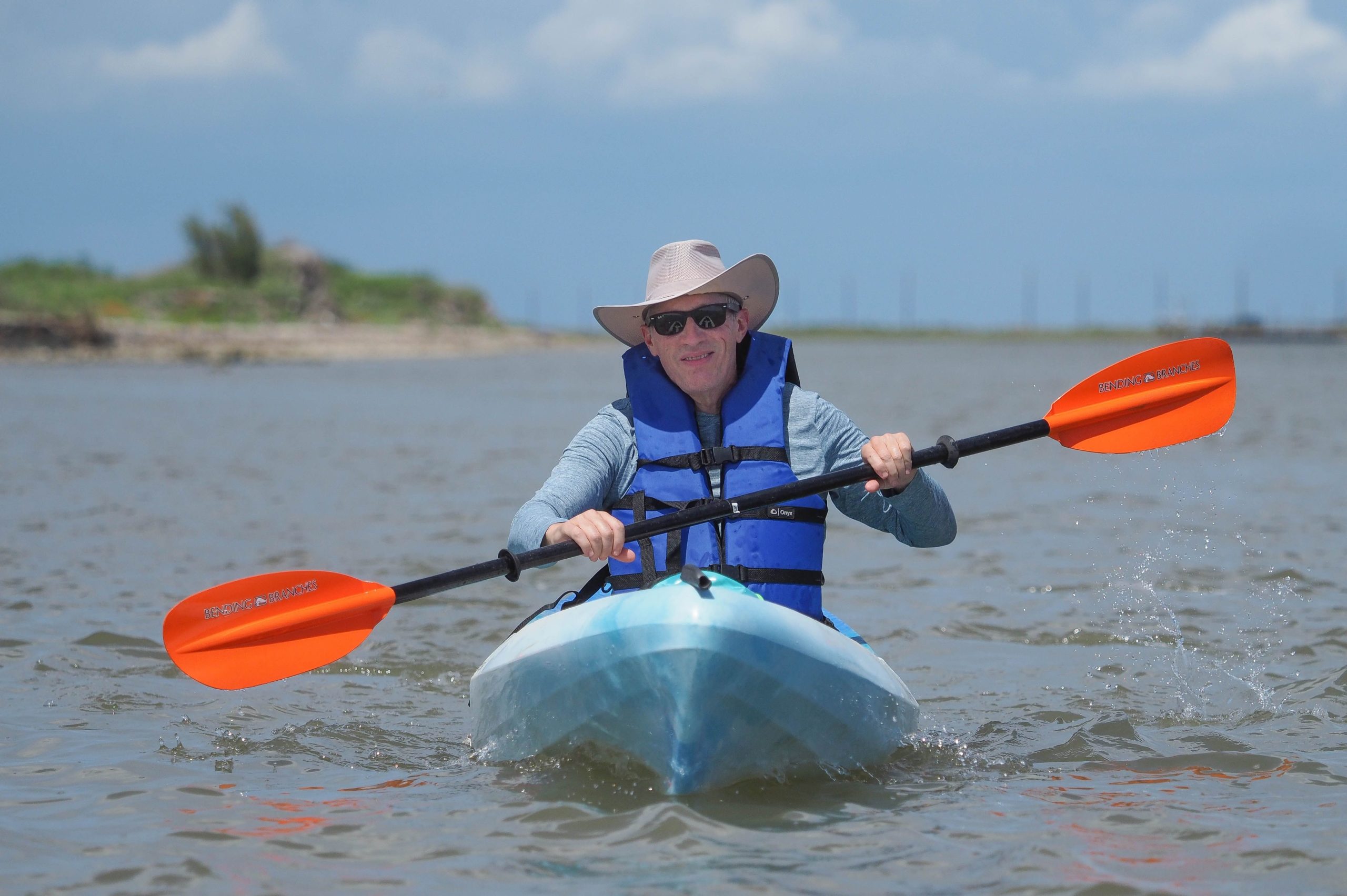
Chris LeBlanc paddles a kayak along the Colorado River near Matagorda, Texas. Pam LeBlanc photo
If you’re into long walks on the sand, just park at Jetty Park, located at the very end of FM 2031. From there, you can traipse across a wooden boardwalk over the dunes, then access the beach. The park’s picnic tables, outdoor showers and bathrooms are free and open to the public, too.
If you want to drive onto the beach, take FM 2031 toward the coast, but turn left onto the public beach access road (before you reach Matagorda Bay Nature Park) and follow it until it ends at the beach. You’ll need an annual Matagorda County beach vehicle permit, available at local businesses for $10.
Camping is free anywhere along the beach. The swimming is good, but watch for riptides, and don’t get near the jetties or piers, where currents can be strong.
Please bring a bag, too, and pick up a few pieces of trash. And remember the insect repellent ––– mosquitos thrive in this humid environment.
Related: Scalloping along Florida’s Sports Coast
Matagorda Bay Nature Park
Don’t miss Matagorda Bay Nature Park, one of 42 parks owned by the Lower Colorado River Authority.
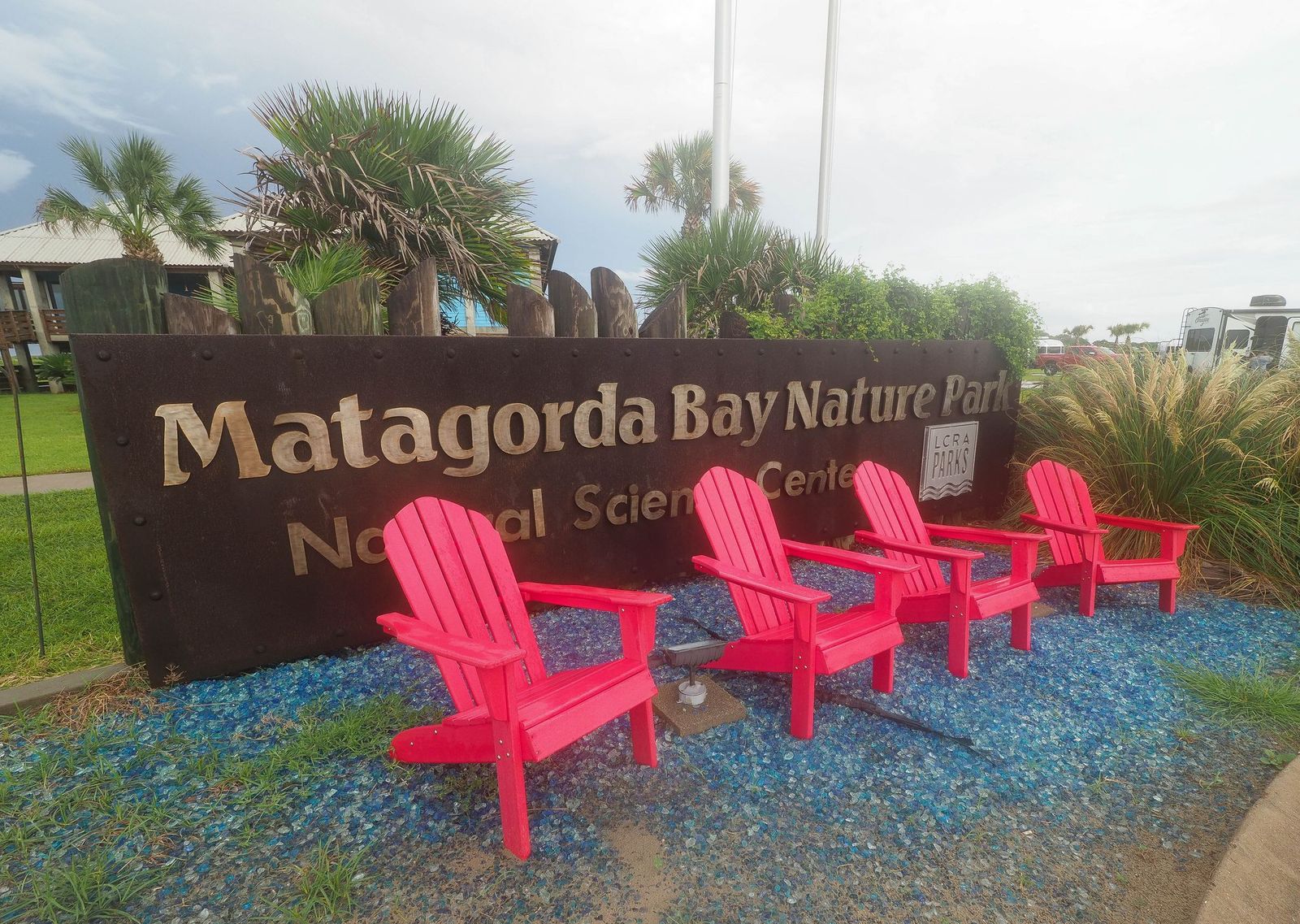
Ten new rental bungalows are opening at Matagorda Bay Nature Park in November. Pam LeBlanc photo
Most folks only see the developed area of the 1,334-acre park ––– the miniature golf course, the sleek headquarters building where you check in for the adjacent RV park, and the gift shop, plus the two RV campground loops, where RVs filled with anglers crowd in side-by-side during warm weather. At sunset, it’s fun to walk the sidewalk along the river and watch the dolphins dip and dive.
But the park extends to the opposite side of the highway, where paddlers can explore watery trails that slice through channels and marshlands. An array of shorebirds make their home here, too, so bring your camera.
Early next year, 10 beach bungalows will open at the park. Each one includes a fully equipped kitchen, bedrooms, bathrooms, and a large outdoor deck. Rates are $300 per night during peak season for a bungalow that sleeps six, or $350 per night for one that sleeps eight.
Visitors can also stay in the park’s Airstream trailers –– already parked, leveled, and equipped with everything you need for a few nights of relaxation.
Go beachcombing

It’s easy to find seashells if you know where to look on Matagorda Beach. Pam LeBlanc photo
During my visit, I discovered one of the best beachcombing stretches of sand in Texas ––– but you can’t reach it by vehicle.
I used a rental kayak from Matagorda Bay Nature Park to paddle across the river, then hiked along a partially overgrown trail (watch for rattlesnakes!) and scrambled over the huge granite blocks that make up the jetty to access the deserted beach.
Related: Five fun family-friendly experiences on the Texas Coast
I found dozens of lightning whelks, the state shell of Texas, as well as a few lettered olive shells, palm-sized quahogs, and orange, red, and gray scallop shells. Giant Atlantic cockles are ridged, like Ruffles potato chips, and oyster shells are everywhere ––– and sharp enough to cut your feet if you step on them.
The best time to find shells is before or after low tide, or after a storm. When you walk along the shoreline, look for the line of debris that marks the most recent high tide. That’s where the newest shells are deposited. Larger shells can be found above the wet line in the sand. And before you head back across the river, look in the heaps of shells piled along the jetty. I’ve found treasures there, too.
Whatever you do, stay on the beach and don’t wander into the dunes. The land adjacent is privately owned, and you’ll be trespassing.
If You Go

Getting there:
Matagorda is located 185 miles from Austin, along the Texas coast. From Matagorda, it’s a 7-mile drive to Matagorda Bay Nature Park and the Gulf of Mexico.

Stay:
The Lower Colorado River Authority has opened booking for 10 new cabins on stilts at Matagorda Bay Nature Park, but they don’t open until November 2022. The park also has two Airstream trailers available for rent, plus RV hookups. We like the Full Stringer Lodge, which has eight comfortable rooms plus outdoor firepits and seating.
Do:
Matagorda makes a great home base for a weekend of outdoor recreation. Head to the beach for fishing, kayaking, and beachcombing. In town, shop for fishing and hunting supplies, as well as clothing and gifts, at Matagorda Bay Outfitters, which recently expanded.
Eat & Drink:
Try Coastal Que BBQ , 333 Fisher Street, for excellent brisket, sausage, turkey, and ribs, plus decadently cheesy tater tot casserole and banana pudding. (Open seasonally, May through September.) Cassady’s Coffee Bar & Café, 22996 Texas Highway 60, makes homemade pastries, deserts, coffee drinks, and a selection of oversized sandwiches on fresh-baked bread. For quick grab-and-go breakfast foods, try Stanley’s, 752 Market Street. (They also sell gas, fishing licenses, beach toys, tackle, and groceries.)

Pro Tip:
Be sure to check for hermit crabs before you take a shell from the beach. You don’t want to kill an animal for its home, and dead crabs don’t smell good.

















